-
RESEARCH01-01-2017
Direct cost of monitoring conventional hemodialysis conducted by nursing professionals
Revista Brasileira de Enfermagem. 2017;70(2):357-363
Abstract
RESEARCHDirect cost of monitoring conventional hemodialysis conducted by nursing professionals
Revista Brasileira de Enfermagem. 2017;70(2):357-363
DOI 10.1590/0034-7167-2016-0447
Views0See moreABSTRACT
Objective:
to analyze the mean direct cost of conventional hemodialysis monitored by nursing professionals in three public teaching and research hospitals in the state of São Paulo, Brazil.
Method:
this was a quantitative, explorative and descriptive investigation, based on a multiple case study approach. The mean direct cost was calculated by multiplying (clocked) time spent per procedure by the unit cost of direct labor. Values were calculated in Brazilian real (BRL).
Results:
Hospital C presented the highest mean direct cost (BRL 184.52), 5.23 times greater than the value for Hospital A (BRL 35.29) and 3.91 times greater than Hospital B (BRL 47.22).
Conclusion:
the costing method used in this study can be reproduced at other dialysis centers to inform strategies aimed at efficient allocation of necessary human resources to successfully monitor conventional hemodialysis.
-
RESEARCH01-01-2017
Unna’s boot: experience of care of people with venous ulcers
Revista Brasileira de Enfermagem. 2017;70(2):349-356
Abstract
RESEARCHUnna’s boot: experience of care of people with venous ulcers
Revista Brasileira de Enfermagem. 2017;70(2):349-356
DOI 10.1590/0034-7167-2016-0219
Views0See moreABSTRACT
Objective:
to understand the experience of care of people with venous ulcers using an Unna’s boot.
Method:
a qualitative study, based on the social phenomenology by Alfred Schütz, was carried out with 12 adults interviewed in 2015. The statements were analyzed and organized in thematic categories.
Results:
the following categories emerged: “Unna’s boot annoyance versus wound improvement”, “Difficulties for accessing care with the Unna’s boot”, “Care for healing and preventing recurrence”, and “Receiving more attention from the healthcare professional”.
Conclusion:
the experience of care of people using an Unna’s boot revealed the annoyance caused by this device, which was overcome due to the wound improvement. However, access to care was compromised by the lack of structure at the service, frustrating the patients’ expectations regarding wound healing. The issues of these people’s intersubjective universe should be considered in the management of care of venous ulcers.
-
RESEARCH01-01-2017
Spanish version of the scale of attitudes toward alcohol, alcoholism and alcoholics: content validation
Revista Brasileira de Enfermagem. 2017;70(2):342-348
Abstract
RESEARCHSpanish version of the scale of attitudes toward alcohol, alcoholism and alcoholics: content validation
Revista Brasileira de Enfermagem. 2017;70(2):342-348
DOI 10.1590/0034-7167-2015-0149
Views0See moreABSTACT
Objective:
to describe the process of translation and cultural adaptation of the scale of attitudes towards alcohol, alcoholism and alcoholics into the Spanish language.
Methods:
this was a methodological study, which followed the international guidelines for translation and adaptation of measurement scales.
Results:
During the process of translation and cultural adaptation of scale of attitudes towards alcohol, alcoholism and alcoholics to the Spanish language, the items were adjusted based on semantic, idiomatic and conceptual equivalence of the expressions contained in the scale of attitudes towards alcohol, alcoholism and alcoholics. Content validation indicated satisfactory validity indexes, with Intraclass Correlation Coefficient (ICC) (0.97), Content Validity Index (CVI) (0.92), and the Prevalence Adjusted Bias Adjusted Kappa (PABAK) (0.80).
Conclusion:
the scale of attitudes towards alcohol, alcoholism and alcoholics, adapted and translated into the Spanish language, presented content validity with satisfactory indexes, which affirmed that the instrument was adapted for the Colombian context. The next step will be evaluation of its psychometric properties in order to guarantee reliability for its use in Hispanic populations.
-
RESEARCH01-01-2017
Nursing care protocol for patients with a ventricular assist device
Revista Brasileira de Enfermagem. 2017;70(2):335-341
Abstract
RESEARCHNursing care protocol for patients with a ventricular assist device
Revista Brasileira de Enfermagem. 2017;70(2):335-341
DOI 10.1590/0034-7167-2016-0363
Views0See moreABSTRACT
Objective:
to develop and validate a nursing care protocol for patients with a ventricular assist device (VAD).
Method:
descriptive study, with a quantitative approach, for an instrument’s methodological validation. Three stages were conducted: development of the instrument; protocol content validation according to the Delphi technique, and agreement among experts and the scientific literature.
Results:
based on the content validation, a care protocol for patients with a VAD was created and assessed by Spanish experts. Of the 15 items evaluated by means of the content validity index (CVI), 10 presented solid evidence of validation, with Kappa ranging between 0.87 and 1.
Conclusion:
the method enabled the validation of interventions that will contribute to qualified and standardized care for patients with a VAD.
-
RESEARCH01-01-2017
Nasoenteral tube: factors associated with delay between indication and use in emergency services
Revista Brasileira de Enfermagem. 2017;70(2):326-334
Abstract
RESEARCHNasoenteral tube: factors associated with delay between indication and use in emergency services
Revista Brasileira de Enfermagem. 2017;70(2):326-334
DOI 10.1590/0034-7167-2016-0222
Views0See moreABSTRACT
Objective:
to know the time between indication and use of a nasoenteral tube (NET) and factors associated with delays.
Method:
A prospective cohort study that followed adults in a Brazilian emergency department, since the indication of the use of a NET, evaluating clinical variables and the work process. The Generalized Estimated Equations model was adopted to identify factors associated with the delays in each stage of the process.
Results:
the time between indication and use of NET was 573 (IQR: 3601,093) minutes, in 150 insertions of NET. Insertions in patients who previously did not use it; delays in the medical, nutrition, and nursing care routine; use of mechanical ventilation; noradrenaline; and fasting were factors for longer time before the use of the tube.
Conclusion:
the time between indication and use of NET was high, exceeding 10 hours in half of the cases. Factors related to the clinical condition of the patient and to the care management would contribute to delays.
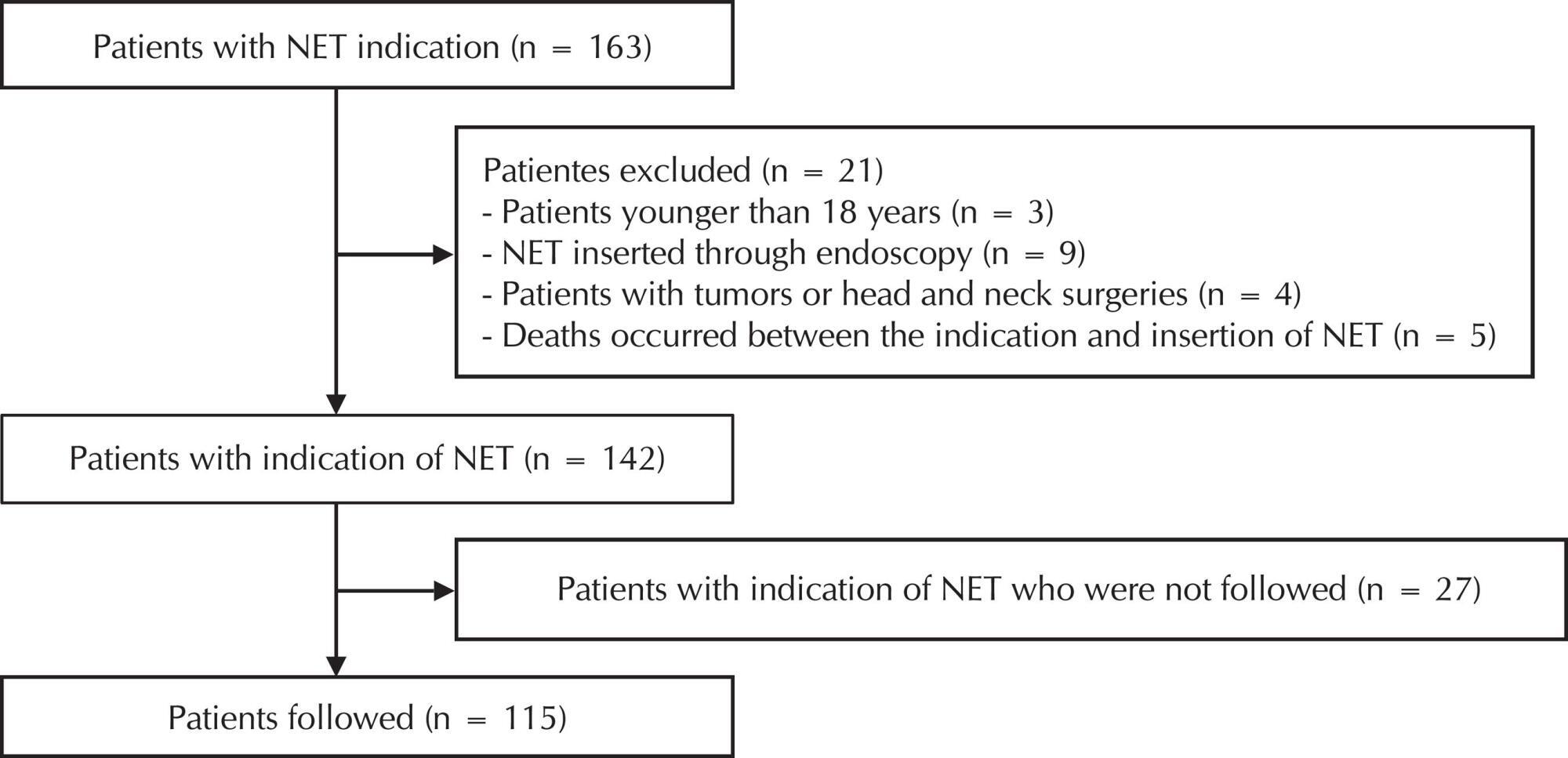
-
RESEARCH01-01-2017
Non-pharmacological measures in preterm newborns submitted to arterial puncture
Revista Brasileira de Enfermagem. 2017;70(2):317-325
Abstract
RESEARCHNon-pharmacological measures in preterm newborns submitted to arterial puncture
Revista Brasileira de Enfermagem. 2017;70(2):317-325
DOI 10.1590/0034-7167-2016-0003
Views0See moreABSTRACT
Objective:
to assess pain in preterm newborns and to compare the neonatal and therapeutic variables with the total scores of the Neonatal Facial Coding System of preterm newborns submitted to arterial puncture exposed to music and 25% oral glucose.
Method:
a comparative study with 48 recordings of preterm newborns – Group 1, music (26); Group 2, glucose 25% (22) – individually analyzed by three trained nurses, after Kappa of at least 80%.
Results:
the variables and the pain scores of the groups did not present statistical significance (p < 0.05) according to the Neonatal Facial Coding System. 80.8% of the preterm infants in Group 1 had a higher quantitative score ≥ 3 in the neonatal variables (gender, type of delivery), and therapeutic variables (type of oxygen therapy, place of hospitalization, type of puncture).
Conclusion:
There was no difference when comparing the music and glucose 25% groups and the variables studied.
-
RESEARCH01-01-2017
Moral sensitivity in Primary Health Care nurses
Revista Brasileira de Enfermagem. 2017;70(2):308-316
Abstract
RESEARCHMoral sensitivity in Primary Health Care nurses
Revista Brasileira de Enfermagem. 2017;70(2):308-316
DOI 10.1590/0034-7167-2016-0453
Views0See moreABSTRACT
Objective:
to characterize the profile and describe the moral sensitivity of primary health care nurses.
Method:
this is a quantitative, transversal, exploratory, descriptive study. The data were collected through the Moral Sensitivity Questionnaire translated and adapted to Brazil. 100 primary health care nurses participated, from Rio Grande do Sul, Brazil. The data collection took place during the months of March and July 2016, in an online form. The analysis of the data occurred through descriptive statistical analysis.
Results:
the nurses had an average moral sensitivity of 4.5 (out of 7). The dimensions with the greatest moral sensitivity were: interpersonal orientation, professional knowledge, moral conflict and moral meaning.
Conclusion:
the nurses of Rio Grande do Sul have a moderate moral sensitivity, which may contribute to a lower quality in Primary Health Care.
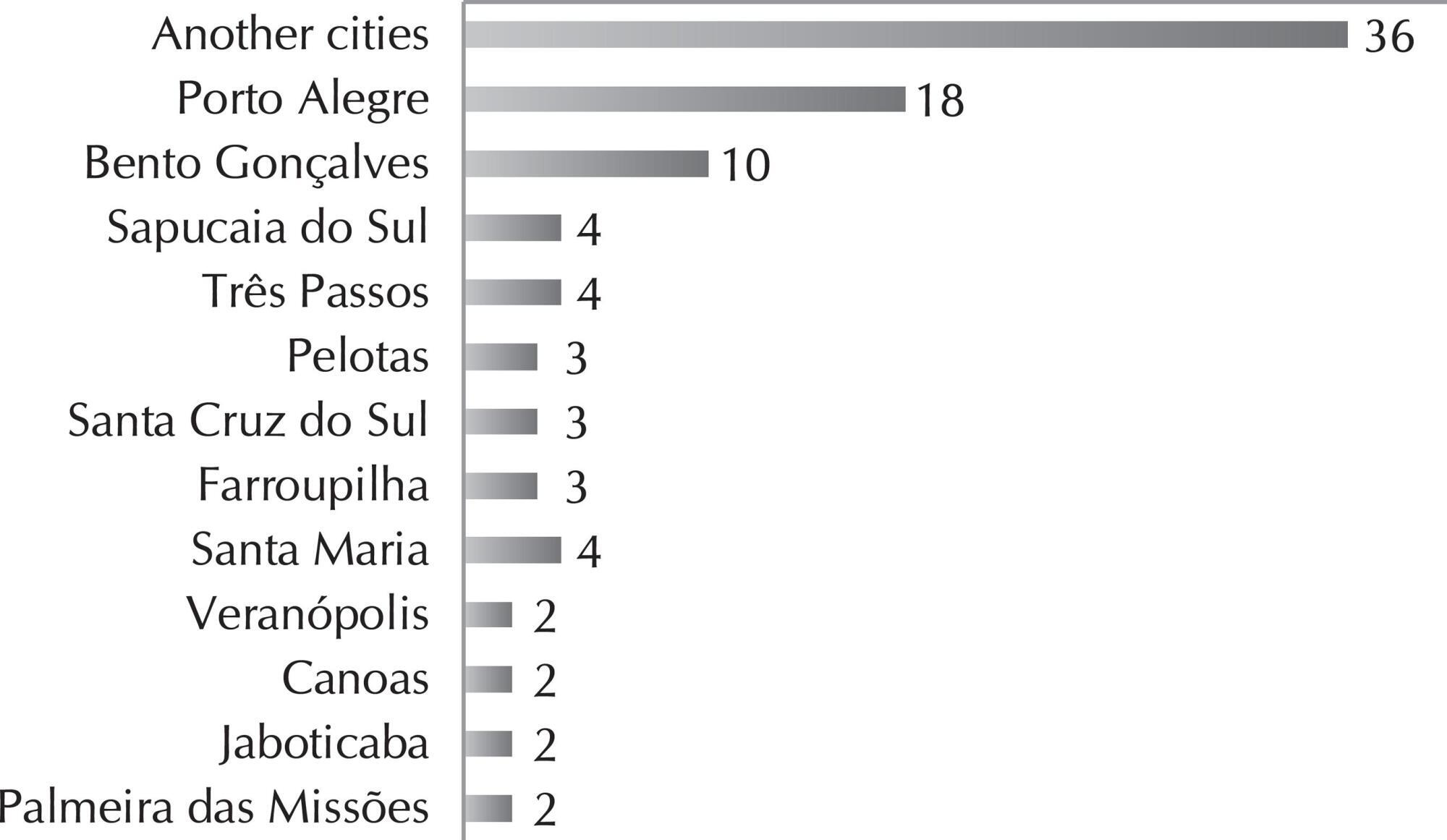
-
RESEARCH01-01-2017
Moral suffering among nurse educators of technical courses in nursing
Revista Brasileira de Enfermagem. 2017;70(2):301-307
Abstract
RESEARCHMoral suffering among nurse educators of technical courses in nursing
Revista Brasileira de Enfermagem. 2017;70(2):301-307
DOI 10.1590/0034-7167-2016-0185
Views0See moreABSTRACT
Objective:
to understand situations of moral suffering experienced at work by nurse educators of technical courses in nursing.
Method:
a qualitative study with discursive textual analysis by means of semi-structured interviews with ten nurse educators at two professional educational institutions in southern Brazil.
Results:
two categories were established: lack of commitment on the part of students to the future profession, expressed through disrespect and disregard for the work of nurse educators, with inappropriate behaviors and attitudes; and lack of commitment to the learning-teaching process, expressed by indifference to the professional profile and lack of interest in lessons and care practices associated with learning gaps.
Conclusion:
these situations have an impact on experiences of moral suffering by nurse educators, and show a need for rethinking their practice, relationships, and educational spaces, and implementing strategies to favor the confrontation of dilemmas and conflicts experienced in educational practice in technical courses in nursing.
-
ORIGINAL ARTICLE07-14-2021
Impact of the contamination time by Escherichia coli on biofilm formation in surgical instruments
Revista Brasileira de Enfermagem. 2021;74(3):e20200759
Abstract
ORIGINAL ARTICLEImpact of the contamination time by Escherichia coli on biofilm formation in surgical instruments
Revista Brasileira de Enfermagem. 2021;74(3):e20200759
DOI 10.1590/0034-7167-2020-0759
Views1See moreABSTRACT
Objectives:
to evaluate the microbial load and adherence of Escherichia coli in different areas of the surgical instrument surface exposed to experimental contamination over time.
Methods:
experimental study in which fragments of crile forceps (serrated, rod and rack) were contaminated by immersion in Tryptic Soy Broth, containing 106 CFU/mL of E. coli, for 1, 2, 4, 6, 8, 12 and 24 hours. Microbial load and bacterial adherence were evaluated using microbiological culture and scanning electron microscopy, respectively.
Results:
there was an increase in the microbial load on the surgical instrument, proportional to the contamination interval, ranging from 102 after 1 hour to 105 CFU/cm2 in 24 hours. The presence of exopolysaccharide was detected after two hours of contamination.
Conclusions:
microbial load and adhesion of E. coli increased over time, reaching 105 CFU/cm2 after 24 hours of contamination, starting biofilm formation after two hours.
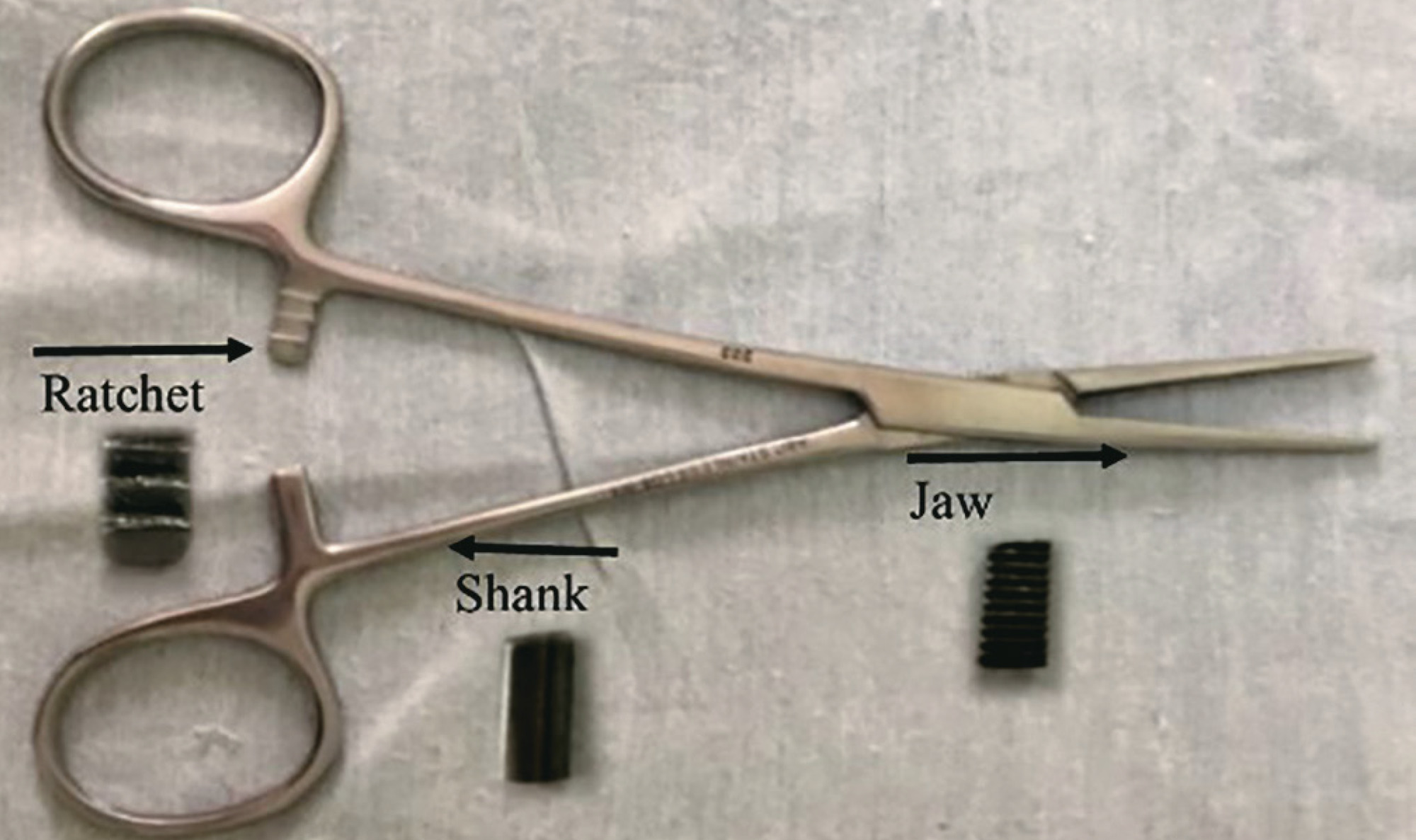
-
REVIEW07-09-2021
Breast cancer screening in Primary Health Care in Brazil: a systematic review
Revista Brasileira de Enfermagem. 2021;74(3):e20200995
Abstract
REVIEWBreast cancer screening in Primary Health Care in Brazil: a systematic review
Revista Brasileira de Enfermagem. 2021;74(3):e20200995
DOI 10.1590/0034-7167-2020-0995
Views1See moreABSTRACT
Objectives:
to analyze care strategies for breast cancer screening in Primary Health Care in Brazil.
Methods:
this is a systematic review following the Cochrane Collaboration recommendations.
Results:
among 355 manuscripts, five were eligible. The patient navigation program by Community Health Agent stood out with the best result, among the strategies: flexibility of goals considering viability; community engagement; team training; active search of the target population by Community Health Agent; request for mammography by physicians; actions integrated to women’s health; monitoring of mammography results, absent users, and population coverage by physician and nurse; and assessment of criteria for requesting screening mammography by means of an information system. The population coverage rate in the program ranged from 23% to 88%.
Conclusions:
Primary Health Care in Brazil presents devices with potential to induce the production of care for breast cancer screening.
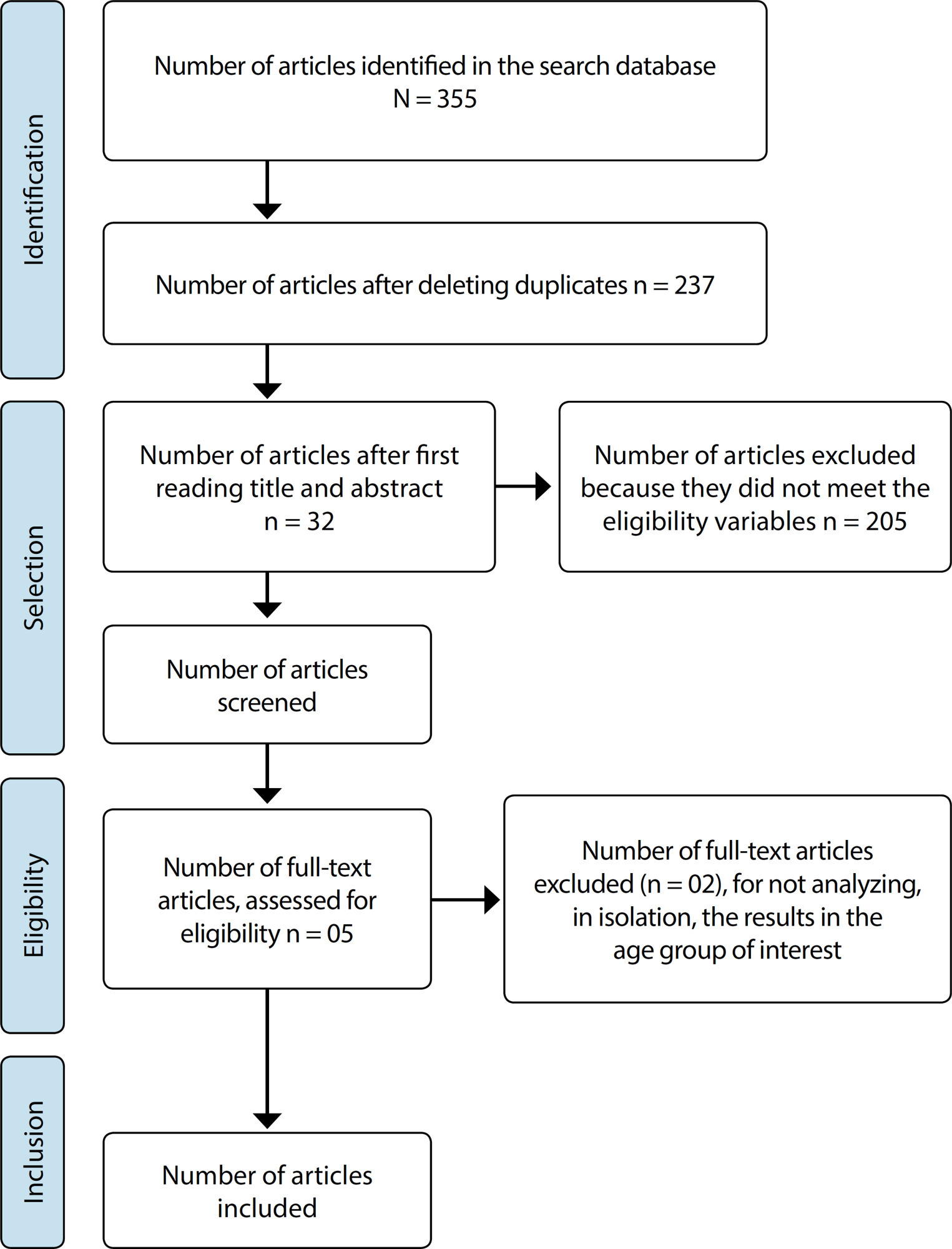
-
ORIGINAL ARTICLE06-18-2021
Spatial-temporal analysis of leprosy in a priority Brazilian northeast municipality for disease control
Revista Brasileira de Enfermagem. 2021;74(3):e20201101
Abstract
ORIGINAL ARTICLESpatial-temporal analysis of leprosy in a priority Brazilian northeast municipality for disease control
Revista Brasileira de Enfermagem. 2021;74(3):e20201101
DOI 10.1590/0034-7167-2020-1101
Views0See moreABSTRACT
Objectives:
to analyze the spatial-temporal distribution of leprosy in a priority municipality for leprosy control.
Methods:
ecological study, conducted in a city in the Northeast of Brazil, whose analysis units were census sectors. The study used compulsory notification data for cases registered between 2008 and 2017. TerraView software and the Batch Geocode tool was used for geocoding. The detection of spatial-temporal agglomerations of high relative risks was done by scanning statistics.
Results:
the spatial-temporal distribution of cases was heterogeneous, creating four agglomerations of high relative risks in the urban area of the municipality between the years 2008 and 2012; and annual prevalence rates classified from high to hyperendemic.
Conclusions:
areas of higher risk and concentration of the disease in space-time were linked to the characteristics of high population density and social vulnerability of these spaces, raising the prioritization of health professionals’ actions, systems, and services for control, and monitoring the disease.
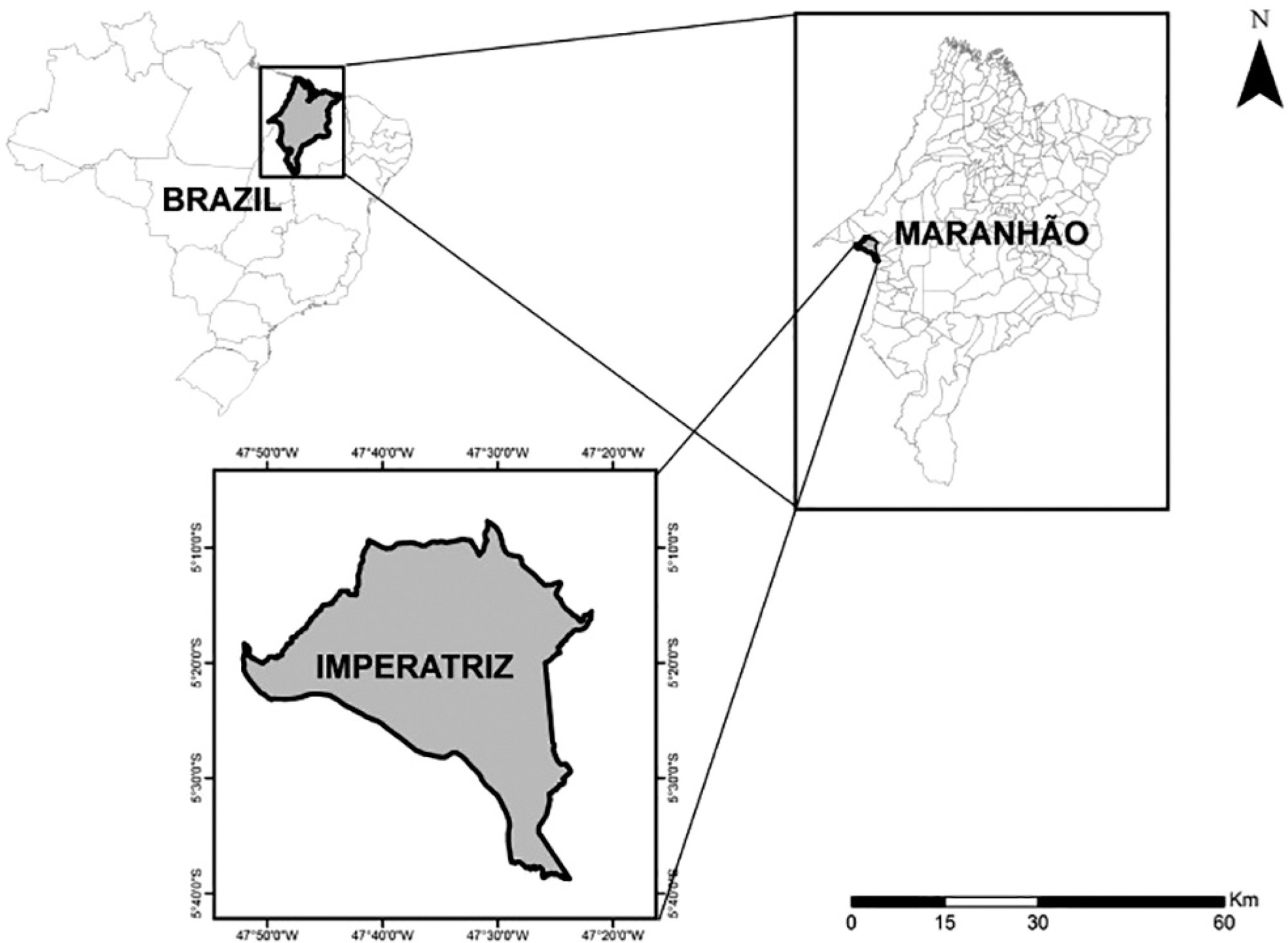
-
ORIGINAL ARTICLE06-18-2021
Assessment of the implementation of a nurse-initiated pain management protocol in the emergency department
Revista Brasileira de Enfermagem. 2021;74(3):e20201303
Abstract
ORIGINAL ARTICLEAssessment of the implementation of a nurse-initiated pain management protocol in the emergency department
Revista Brasileira de Enfermagem. 2021;74(3):e20201303
DOI 10.1590/0034-7167-2020-1303
Views0See moreABSTRACT
Objectives:
to assess the implementation of a nurse-initiated pain management protocol for patients triaged as semi-urgent, and its impact in pain intensity, in the Emergency Department.
Methods:
a prospective cohort study for adult patients with pain who had been triaged as semi-urgent and admitted to the hospital’s Emergency Department. Patients who received the intervention (pain-management protocol with analgesic administration) were compared to those who were managed using the conventional approach (physician evaluation prior to analgesic administration).
Results:
of the 185 patients included, 55 (30%) received the intervention, and 130 (70%) were managed conventionally. Patients in the intervention group were more likely to have taken pain medication in the 4 hours prior to admission, and reported higher levels of pain at admission and more significant reductions in pain level.
Conclusions:
despite low protocol adherence, the intervention resulted in higher reported pain relief.
-
ORIGINAL ARTICLE09-10-2021
Contradicting perceptions of nursing teachers on the neoliberal context of labor
Revista Brasileira de Enfermagem. 2021;74(4):e20200056
Abstract
ORIGINAL ARTICLEContradicting perceptions of nursing teachers on the neoliberal context of labor
Revista Brasileira de Enfermagem. 2021;74(4):e20200056
DOI 10.1590/0034-7167-2020-0056
Views0See moreABSTRACT
Objectives:
To identify and analyze the perceptions of nursing teachers on the new configurations of the job world and the repercussions for their labor activities.
Methods:
Qualitative, descriptive, exploratory research, carried out at two federal nursing colleges in Rio de Janeiro. Data collection occurred with 27 nursing teachers, between May and June 2016, through semi-structured interviews. The data were treated using the thematic content analysis technique.
Results:
The results showed contradictions in the teachers’ perceptions about the job world, which has been guided by neoliberal precepts. Such contradictions are characterized by manifestations in favor of incorporating these precepts, highlighting their negative effects on nursing teaching work.
Final considerations:
There are incongruities in the way of perceiving the current configuration of the job world, proposing more and profound reflections on such a work scenario.
-
ORIGINAL ARTICLE06-04-2021
Association between early pregnant hospitalization and use of obstetric interventions and cesarean: a cross-sectional study
Revista Brasileira de Enfermagem. 2021;74(4):e20200397
Abstract
ORIGINAL ARTICLEAssociation between early pregnant hospitalization and use of obstetric interventions and cesarean: a cross-sectional study
Revista Brasileira de Enfermagem. 2021;74(4):e20200397
DOI 10.1590/0034-7167-2020-0397
Views0See moreABSTRACT
Objective:
Evaluate the association between early pregnant hospitalization and the use of obstetric interventions and cesarean delivery route.
Methods:
Cross-sectional study, with 758 women selected at the time of childbirth. It was assumed as early hospitalization when the woman was admitted to the hospital having less than 6 cm of cervical dilation. Logistic regression models were constructed in order to estimate the odds ratio for each obstetric intervention, adjusted by sociodemographic and obstetric variables.
Results:
73.22% of women were early hospitalized. On average, they had 1.97 times the chance to undergo Kristeller’s maneuver, 2.59 and 1.80 times the chance to receive oxytocin infusion and analgesia, respectively, and 8 times more chances to having their children by cesarean delivery when compared to women that had timely hospitalization.
Conclusion:
Early hospitalized women were submitted to a higher number of obstetric intervention and had increased chances of undergoing cesarean sections.
-
ORIGINAL ARTICLE07-30-2021
Meaning of aging for caregivers of senile elderly people
Revista Brasileira de Enfermagem. 2021;74(4):e20201240
Abstract
ORIGINAL ARTICLEMeaning of aging for caregivers of senile elderly people
Revista Brasileira de Enfermagem. 2021;74(4):e20201240
DOI 10.1590/0034-7167-2020-1240
Views0See moreABSTRACT
Objectives:
to understand the meaning of aging for caregivers of senile elderly people.
Methods:
qualitative study carried out with 12 caregivers of elderly people registered in the Home Care Service, adopting the Explanatory Model of Kleinman’s Disease as a theoretical framework. Data were collected from April to June 2019, through semi-structured, audio-recorded interviews, carried out at home and submitted to content analysis.
Results:
taking care of senile elderly people triggers reflections on aging that sometimes lead to a new meaning of this process, besides stimulating the recognition of the factors that influence it, with emphasis on the life history, occupation and deleterious behaviors adopted throughout life.
Final Considerations:
the care experience influences the meaning attributed to aging, favoring: the identification of modifiable and non-modifiable aspects and behaviors that make it healthy; reflection on aging itself, with a new meaning of habits and behaviors to be adopted.
-
ORIGINAL ARTICLE07-30-2021
Curricular reforms in the transformation of nursing teaching in a federal university
Revista Brasileira de Enfermagem. 2021;74(4):e20201242
Abstract
ORIGINAL ARTICLECurricular reforms in the transformation of nursing teaching in a federal university
Revista Brasileira de Enfermagem. 2021;74(4):e20201242
DOI 10.1590/0034-7167-2020-1242
Views1See moreABSTRACT
Objectives:
to discuss the curricular reforms adopted for nursing teaching in Brazil, from 1969 to 2019.
Methods:
historical, qualitative approach using the thematic oral history and document research. 13 interviews were carried out with graduation nursing professors from a federal university in the South of Brazil. The document sources were the political-pedagogical projects of the course and their associated documents. Minayo’s thematic analysis was used.
Results:
nursing curricula delineates the profile of the professional that must be formed and are reviewed in order to be adapted to social and educational changes, showing the scientific and professional potential of the nurse. Curricular reforms consider the quality of nursing formation.
Final Considerations:
the structure of the curriculum and the reforms that took place emerged according to the historical, political, epidemiological and social context demanded from the profession, to attend to the demands of society and to the work market.
-
ORIGINAL ARTICLE12-13-2019
Accessibility of children with special health needs to the health care network
Revista Brasileira de Enfermagem. 2019;72:65-71
Abstract
ORIGINAL ARTICLEAccessibility of children with special health needs to the health care network
Revista Brasileira de Enfermagem. 2019;72:65-71
DOI 10.1590/0034-7167-2017-0899
Views0See moreABSTRACT
Objective:
To know how children with special health needs access the health care network.
Method:
This is a qualitative research of descriptive-exploratory type, developed using semi-structured interviews mediated by the Talking Map design. Participants were 19 family caregivers of these children in two Brazilian municipalities. Data were submitted to inductive thematic analysis.
Results:
Difficulties were mentioned from the diagnosis moment to the specialized follow-up, something represented by the itinerary of the c hild and his/her family in the search for the definition of the medical diagnosis and the access to a specialized professional; a gap between the children’s needs and the care offered was observed in primary health care.
Conclusion:
The access of children with special health needs is filled with obstacles such as slowness in the process of defining the child’s diagnosis and referral to a specialist. Primary health care services were replaced by care in emergency care units.
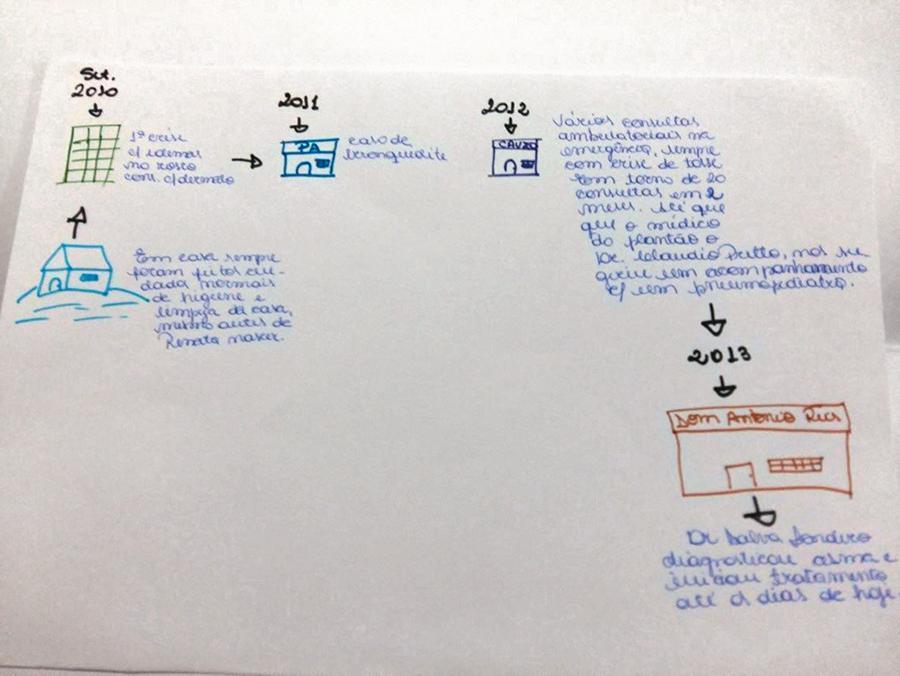
-
08-19-2019
Humor intervention in the nurse-patient interaction
Revista Brasileira de Enfermagem. 2019;72(4):1078-1085
Abstract
Humor intervention in the nurse-patient interaction
Revista Brasileira de Enfermagem. 2019;72(4):1078-1085
DOI 10.1590/0034-7167-2018-0609
Views0ABSTRACT
Objective:
To describe the factors influencing the use of humor in nursing care, its applicability and benefits.
Method:
A scoping review was performed using the Arksey and O’Mally methodology. A search for articles published between 2008 and 2018 was performed using the platforms EBSCO Host, Virtual Health Library and Google Scholar.
Results:
From the initial 465 articles found, 17 were included for final revision. Data allowed to retrieve information on humor definition; its applicability as a nursing intervention; humor as a tool to improve nurse-patient communication and relationship; influence factors; type of humor interventions; humor benefits in health care context and; limitations and precautions of humor intervention.
Conclusion:
The use of humor promotes both communication and human interaction; it promotes well-being; helps deal/cope with difficult and unpleasant situations, reduces tension, discomfort and stress; and strengthens the immune system. This intervention should be used with caution.
Keywords:CommunicationNurse-Patient RelationsNursingPatient Outcome AssessmentWit and Humor as SubjectSee more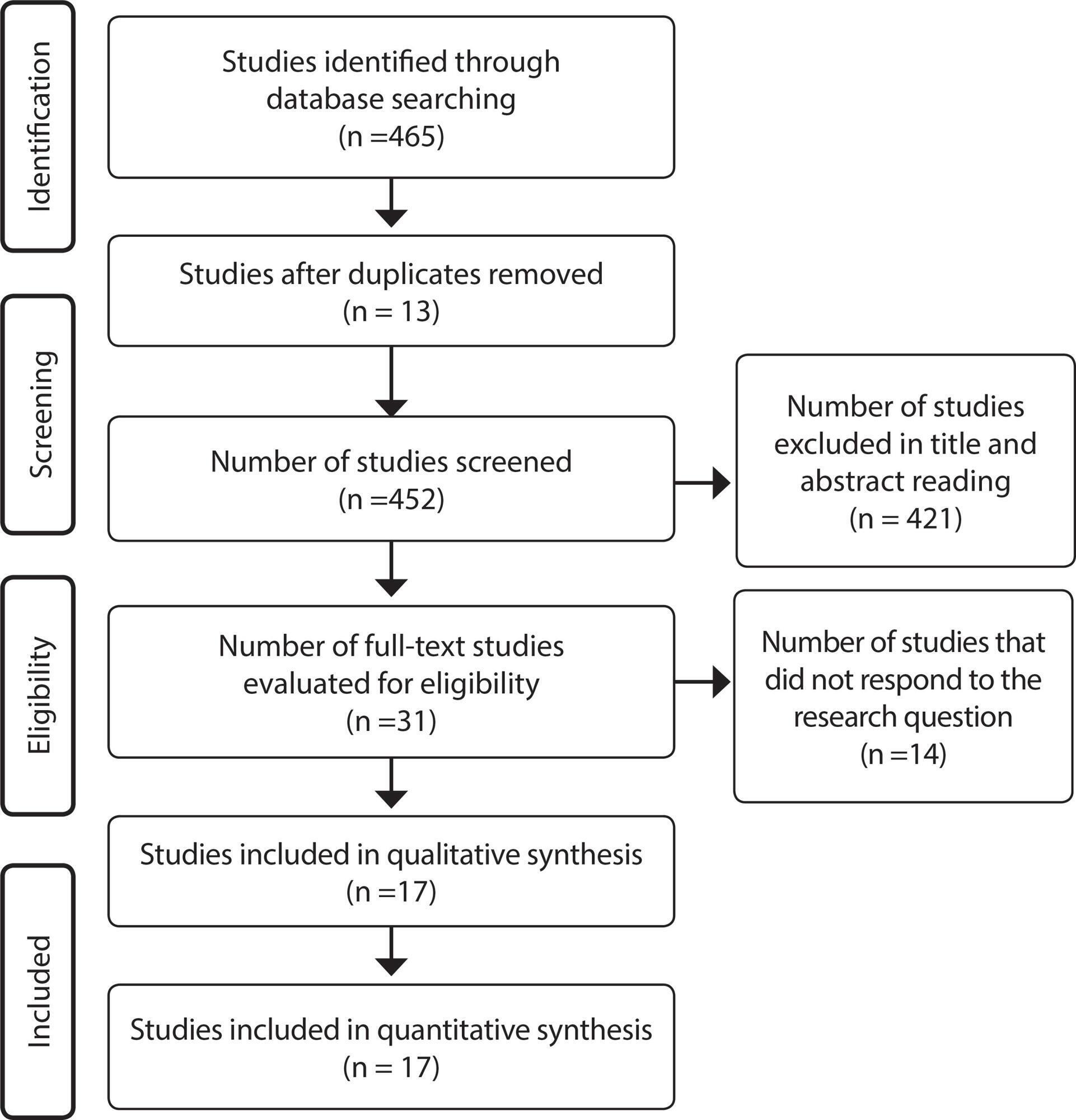
-
ORIGINAL ARTICLE07-13-2020
Incontinence-associated dermatitis in elderly patients: prevalence and risk factors
Revista Brasileira de Enfermagem. 2020;73:e20180475
Abstract
ORIGINAL ARTICLEIncontinence-associated dermatitis in elderly patients: prevalence and risk factors
Revista Brasileira de Enfermagem. 2020;73:e20180475
DOI 10.1590/0034-7167-2018-0475
Views0See moreABSTRACT
Objective:
To determine the prevalence and risk factors for incontinence-associated dermatitis in the elderly.
Method:
Cross-sectional exploratory study carried out in public hospitals. The dermatitis prevalence and associations were obtained by calculating the ratio. The effect dimension was estimated by the odds ratio with a 95% confidence interval and statistical significance p <0.05.
Results:
138 elderly people were included, with an average age of 77.2 years old (± 9.3); 69 (50%) had combined fecal and urinary incontinence. The dermatitis prevalence was 36.2% (50); 28% (14) had pressure injuries; 14% (7), candidiasis. Risk factors were: longer hospital stay (Odds Ratio = 5.8 [2.6-12.9]), obesity (Odds Ratio = 3.6 [1.2-10.4]), high level of dependence (Odds Ratio = 2.4 [1,1-5,0]) and high risk for pressure injury (Odds Ratio = 6.1 [1,4-26,9]).
Conclusion:
The study found a high prevalence of dermatitis associated with incontinence. The early recognition of risk factors favors effective preventive actions.
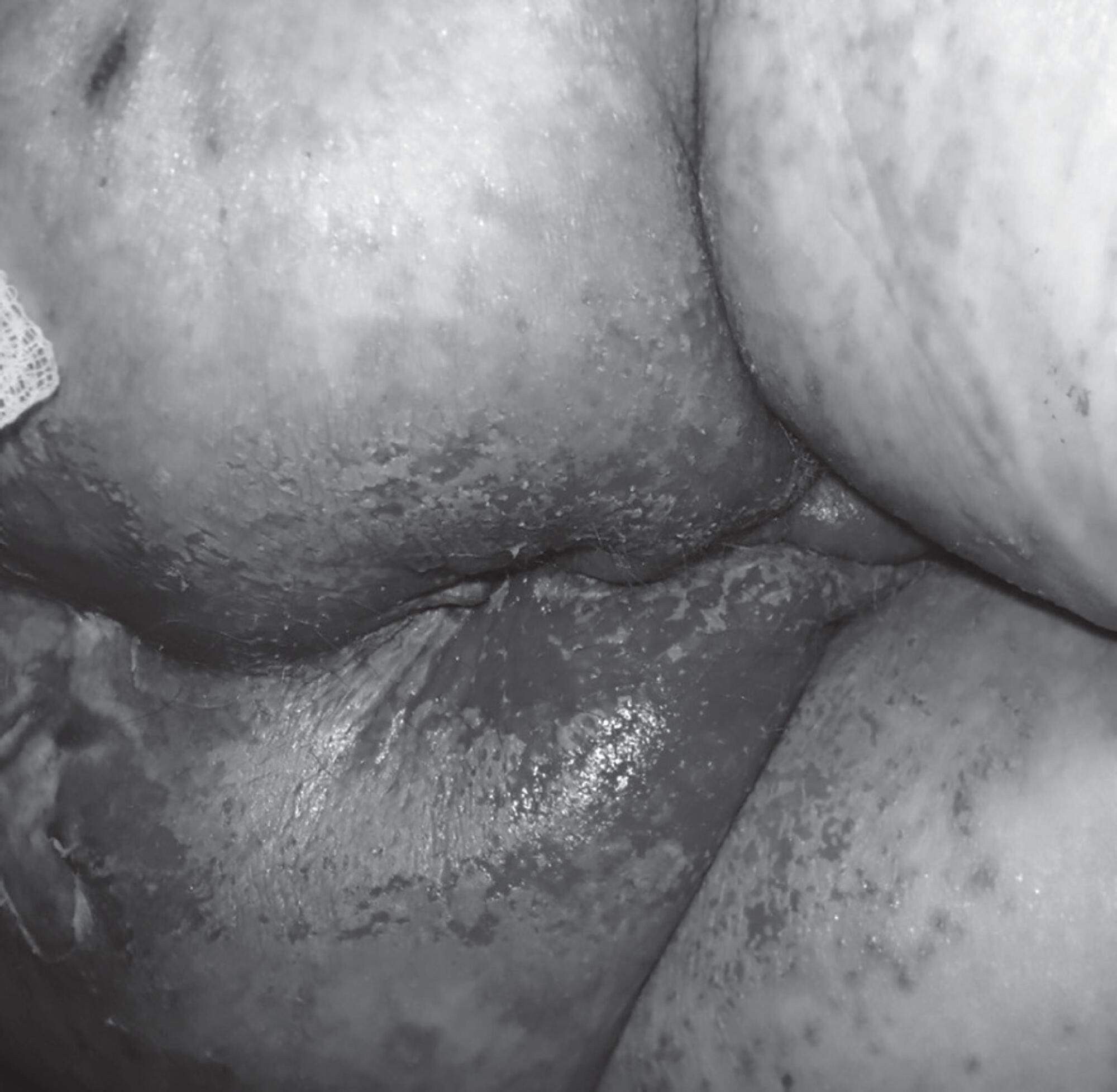
-
ORIGINAL ARTICLE10-21-2019
Workloads and burnout of nursing workers
Revista Brasileira de Enfermagem. 2019;72(6):1435-1441
Abstract
ORIGINAL ARTICLEWorkloads and burnout of nursing workers
Revista Brasileira de Enfermagem. 2019;72(6):1435-1441
DOI 10.1590/0034-7167-2017-0659
Views0See moreABSTRACT
Objective:
to identify workloads in nursing work and its association with nursing worker burnout.
Method:
a cross-sectional study, including 211 nursing workers from a university hospital, between July and August 2016. For the analysis, the descriptive statistics, Chi-Square Test, Fisher’s Exact Test and Mann Whitney U-Test were used.
Results:
the most evidenced loads were biological. A significant association was found between workloads and workers’ occupation, as well as a significant association between workloads and worker burnout. Burnout caused upper limb pain, neck and lumbar pain, lower limb pain, muscle spasm, lower limb edema, mental fatigue, headache, nervousness, and forgetfulness.
Conclusion:
workloads identification is a subsidy for the promotion of interventions that minimize the burnout generated to the health of the nursing worker.
-
ORIGINAL ARTICLE10-21-2019
Nursing care systematization: perceptions and knowledge of the Brazilian nursing
Revista Brasileira de Enfermagem. 2019;72(6):1547-1553
Abstract
ORIGINAL ARTICLENursing care systematization: perceptions and knowledge of the Brazilian nursing
Revista Brasileira de Enfermagem. 2019;72(6):1547-1553
DOI 10.1590/0034-7167-2018-0606
Views0See moreABSTRACT
Objective:
to present the perception and knowledge of Brazilian nursing nurses and academics regarding Nursing Care Systematization.
Method:
a descriptive study, carried out in the first half of 2018.
Results:
of the 596 respondents, 86% perceived Nursing Care Systematization as very important, but only 60.9% used it in their care practice. Its use was statistically associated with a higher level of training. Non-utilization was associated with the perception that it is irrelevant and with little knowledge on the Nursing Process, even in the face of recognition of its obligation. Among professionals who wish to learn more about the subject, understanding the application of the process, especially the planning step, is perceived as a necessity.
Conclusion:
the relevance perception of systematization and levels of knowledge of the professional/academic are directly related to the use or not of Nursing Care Systematization principles.

-
REVIEW12-05-2019
Vulnerability of the elderly: a conceptual analysis
Revista Brasileira de Enfermagem. 2019;72:337-344
Abstract
REVIEWVulnerability of the elderly: a conceptual analysis
Revista Brasileira de Enfermagem. 2019;72:337-344
DOI 10.1590/0034-7167-2018-0728
Views0See moreABSTRACT
Objective:
To analyze the concept of vulnerability of the elderly.
Method:
A concept analysis, according to the method proposed by Walker and Avant, operationalized through integrative review through search in scientific data portals using the
Descriptors:
Health vulnerability, aged, health services for the aged, health of the elderly, vulnerable populations and geriatric health services. To compose the literary corpus, 36 studies were selected.
Results:
Concept antecedents, as well as its attributes, were identified in individual, social and programmatic characteristics, which make up the characteristics of “vulnerability of the elderly”, besides consequences of the phenomenon. These characteristics were analyzed with emphasis on aspects that contribute to the process of vulnerability of the elderly.
Conclusion:
The study demonstrated the multidimensionality of the phenomena studied, highlighting the peculiarities of vulnerability during aging. However, there is a need for further studies on the construct.
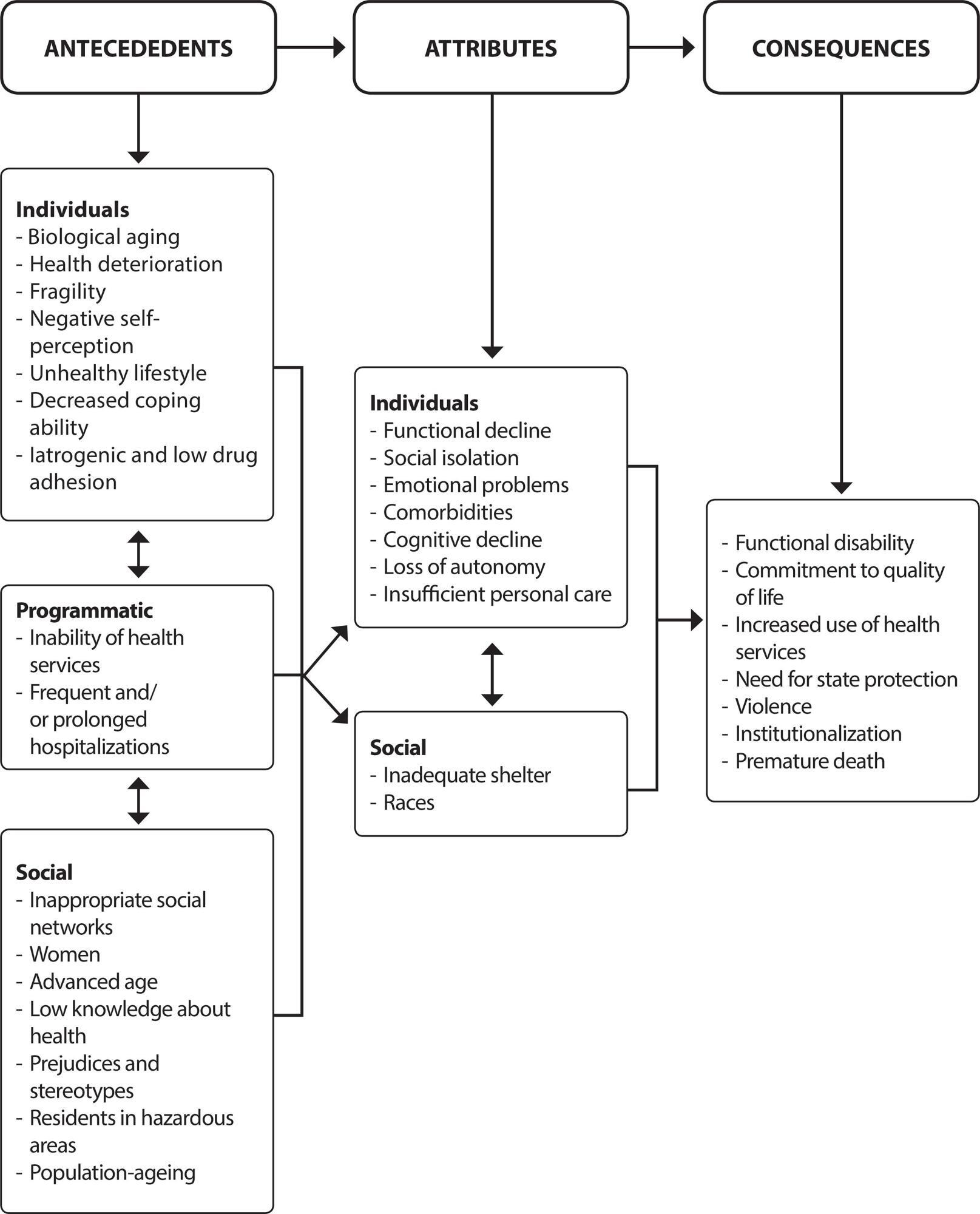
-
01-20-2021
Burnout Syndrome and Associated Factors in Intensive Care Unit Nurses
Revista Brasileira de Enfermagem. 2021;74:e20190535
Abstract
Burnout Syndrome and Associated Factors in Intensive Care Unit Nurses
Revista Brasileira de Enfermagem. 2021;74:e20190535
DOI 10.1590/0034-7167-2019-0535
Views0See moreABSTRACT
Objective:
to estimate prevalence and factors associated with Burnout Syndrome in intensive care nurses in a city in the state of Bahia.
Methods:
a cross-sectional, population-based study carried out with 65 intensive care nurses through a self-administered questionnaire, from July to November 2016, containing sociodemographic data, lifestyle, work characteristics. To define burnout syndrome, the Maslach Burnout Inventory was used.
Results:
Burnout Syndrome prevalence was 53.6%, an association was observed with age, tobacco consumption, alcohol use, weekly night shift hours, employment relationship, having an intensive care specialist title, number of patients on duty, monthly income and considering active or high-strain job.
Conclusion:
the results of this study can contribute to expanding the discussion on stressful working conditions in Intensive Care Units.
-
08-19-2019
Clinical simulation in nursing education in intensive therapy: an integrative review
Revista Brasileira de Enfermagem. 2019;72(4):1061-1070
Abstract
Clinical simulation in nursing education in intensive therapy: an integrative review
Revista Brasileira de Enfermagem. 2019;72(4):1061-1070
DOI 10.1590/0034-7167-2018-0217
Views0See moreABSTRACT
Objective:
to analyze the publications on clinical simulation practices for education in Nursing in Intensive Care.
Method:
an integrative review carried out through LILACS, PubMed, Cochrane Library, CINAHL and SciELO databases, of articles published from 2008 to 2017.
Results:
29 articles were selected, of which 76% discuss the use of simulation in continuing education of nursing professionals, while the others describe their use for student education. There is a higher prevalence of studies with a level of evidence 6 (17), with 28 international publications. There was an increase in scientific production, with 16 articles published in the last three years.
Conclusion:
variables after simulation use, such as confidence, communication skills, efficiency in the identification of clinical worsening of patients, development of technical skills, teamwork and clinical decision-making, presented a significant improvement, demonstrating that this tool is effective in qualifying care for critical patients.
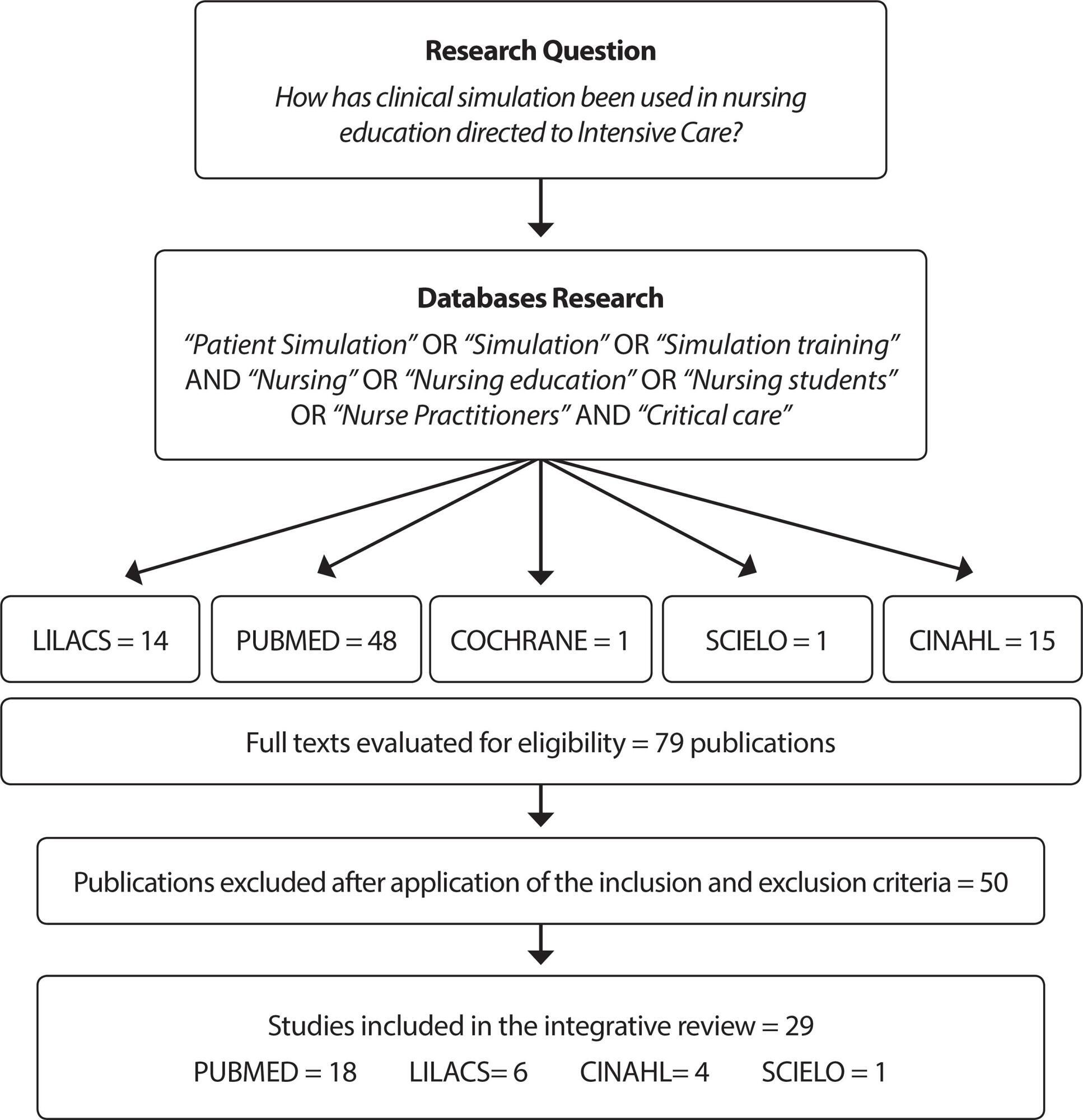
Search
Search in:
Nuvem de Tags
Adolescente (85) Atenção Primária à Saúde (239) COVID-19 (91) Criança (91) Cuidados de Enfermagem (269) Educação em Enfermagem (151) Educação em Saúde (139) Enfermagem (930) Enfermagem Pediátrica (86) Estudantes de Enfermagem (77) Estudos de Validação (131) Família (87) Idoso (208) Promoção da Saúde (99) Qualidade de Vida (104) Saúde do Trabalhador (86) Saúde Mental (145) Saúde Pública (82) Segurança do Paciente (150) Tecnologia Educacional (100)



